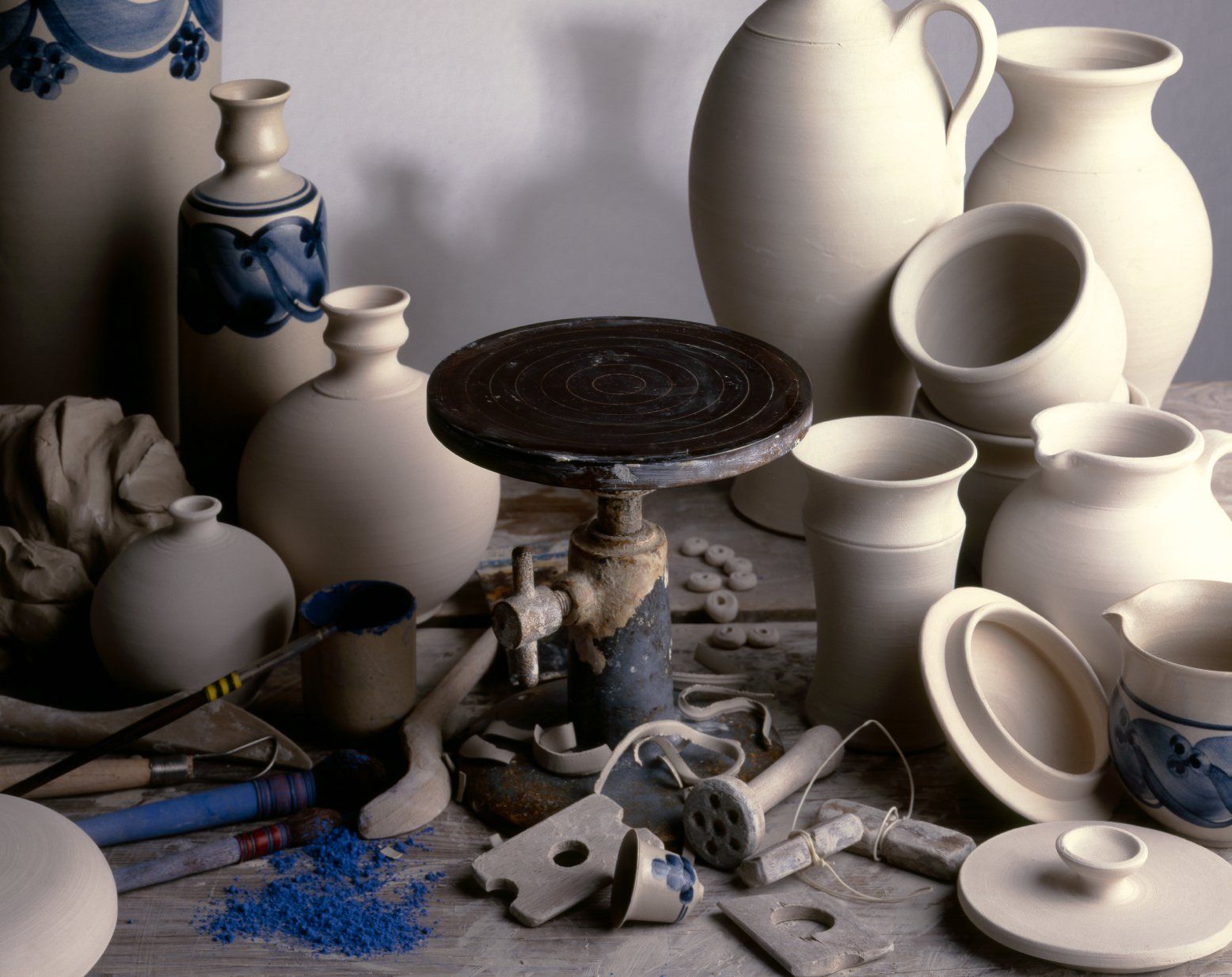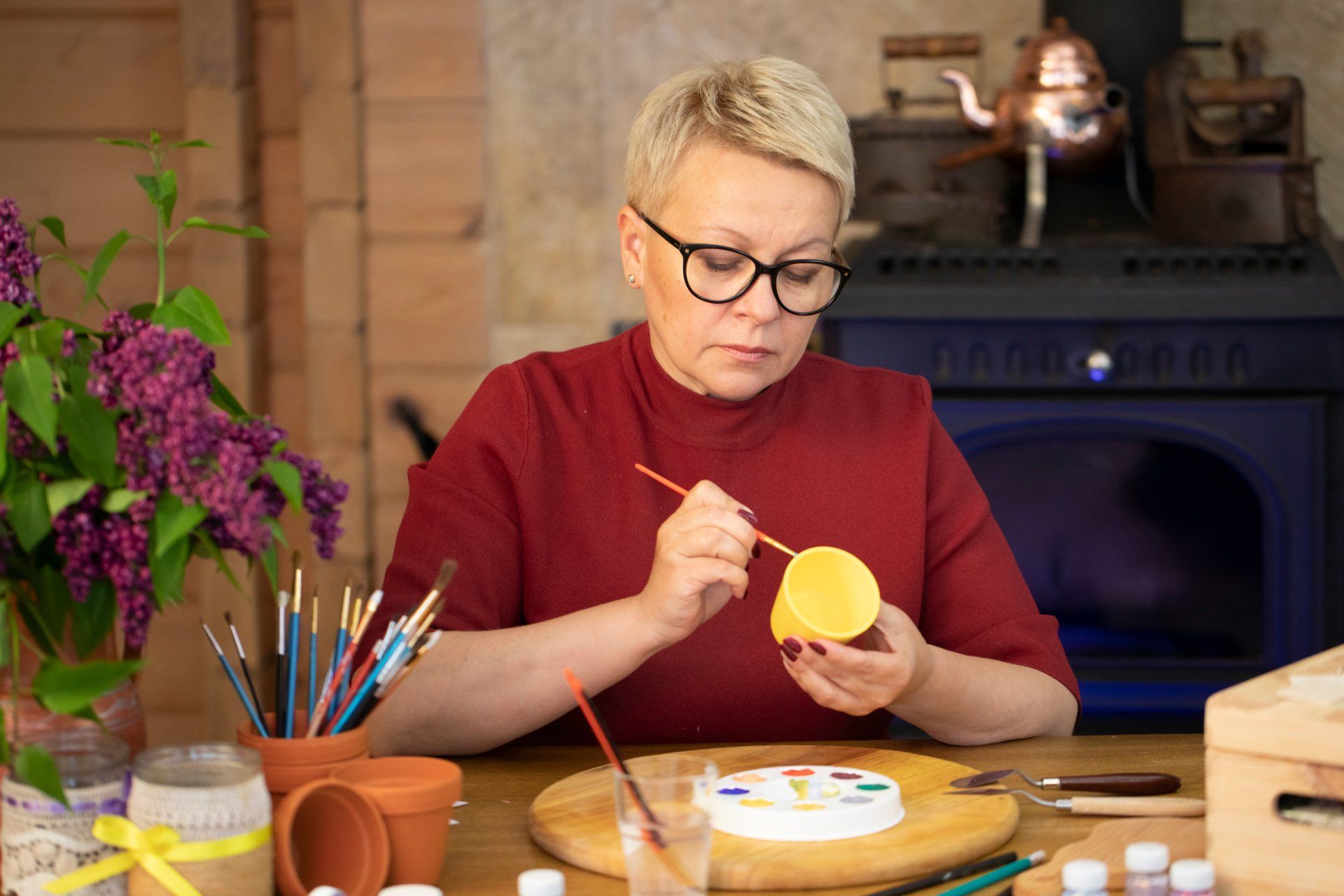Different Types of Pottery and Ceramics
What are the different types of Pottery?

In our studio you will mostly see earthenware bisque, which is clay that has been fired at a relatively low temperature to create a hardened, but brittle material (bisque, or sometimes called biscuit). It is slightly porous (with small holes that water and air can pass through), so cannot be used to contain water. Until of course a glaze has been used to cover the object before it is fired for a second time and rendered waterproof.
But, did you know there are two other types of pottery; stoneware and porcelain. We don't often stock these types of pottery unless it is being used in a specific workshop.
Pottery vs Ceramics?
It is worth mentioning at this point that the terms 'pottery' and 'ceramics' are actually one and the same. The word 'ceramic' is derived from Greek and translates to 'of pottery' or 'for pottery'. Pottery/ceramics are general terms to describe objects that have been made from clay, hardened by firing and then decorated with underglaze and/or glaze. Clay is a natural material created by weathered rock. It's soft, malleable and will permanently harden if baked at high temperatures, making it a practical material for making tableware.
For the purposes of this blogpost, let's call it pottery.
Earthenware
As mentioned, this is clay that's been fired at low temperatures. When we say low temperatures, we mean around 1,000+ degrees centigrade, which of course isn't actually low at all. You only need to stand near our kiln when it's warming up to find that one out. But, in clay terms, that's low.
Stoneware
This is made from a particular type of clay that can be fired at a higher temperature (over 1,200 degrees. It results in a more durable material - more stone-like in quality. The fired results will be waterproof, but until earthenware it doesn't need to be glazed before use.
Porcelain
This comes from refined clay that has been fired at a very high temperature (around 1,450 degrees centigrade) which results in a very hard, shiny material that is often white and translucent in appearance.
The earliest form of porcelain came from China around 1600BC and as a result, is often known as 'fine china'. It is also called 'bone china' when ground animal bone has been added to the clay to make it even more durable.
So, there you have it. A very brief and quick explanation of the various types of pottery you may find in our studio. The quality of the pottery however also depends on the purity of the clay that is used.
Source:
https://nomliving.com/blogs/thingswedo/pottery-and-ceramics-a-brief-explanation


